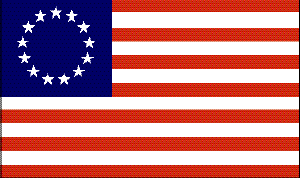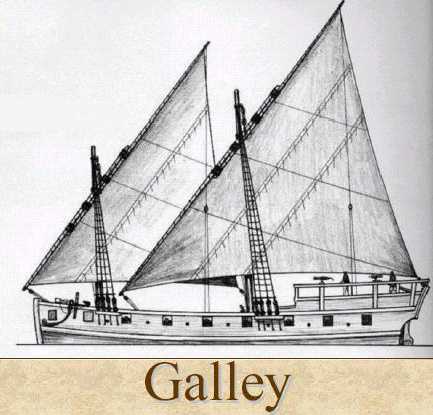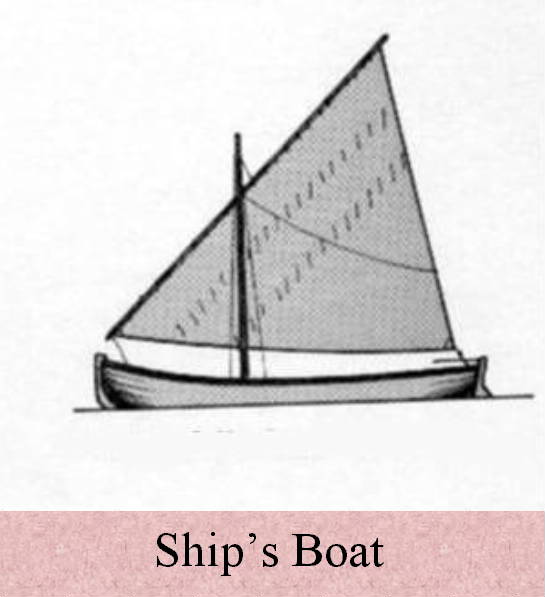|
American Revolution |
Glynn County,
Georgia |
Return to Naval Action
American Ships
| |
"Having received intelligence that the above
vessels were at this place, I put about 300 men, by detachment from the
troops under my command at Fort Howe on board the three gallies—the
Washington, Capt. Hardy; the Lee, Capt. Braddock; and the Bulloch, Capt.
Hatcher —and a detachment of artillery with 2 field pieces, under Capt.
Young, I put on board a boat. " -
Colonel Samuel Elbert
|

American Ships |
| |
 |
Galley
(the
Washington, Capt.
John Hardee;
the Lee, Capt John Cutler
Braddock;
and the Bulloch, Capt. Archibald Hatcher)
In July of 1776, the Continental Congress authorized
building several galleys, four of them for Georgia for coastal defense.
To carry a heavy load of deck armament, the galleys were designed with
broad hulls and deep flattish bottoms. The galley, propelled by sail
and oars, could operate most effectively in the Inland Passages. She
had two masts with lanteen-rigged triangular sails and the heaviest
cannon, a carriage-mounted gun that fired 18-pound cannon balls, was in
the bow where it could fire to either side. The Georgia galleys were
between fifty and seventy feet in length. Twenty double-manned oars on
each side required a crew of at least eighty oarsmen, who stood upright
to row. Service on the galleys was laborious and slaves from loyalists’
forfeited estates were commandeered to act as some of the oarsmen.
Troops from the Continental Army were drafted as “Marines” on the
Florida Expeditions.
|
|
|
|
|
 |
Ship's Boat
(Mr. Austin & Mr. Cantey; patroons-
ship's commander)
Another American vessel used at the engagement was
referred to as “Cantey’s boat,” a boat and a large flat upon which the
artillery was loaded. The galleys could not get up the shallow Altamaha
River to Fort Howe, so Austin and Cantey, along with the hired negroes,
worked the boat and flat up the River. Captain George Young and the
First Company of Artillery, a light artillery company of about 50 men,
along with two field pieces were put on board Cantey’s boat and flat.
|
|
|
|
|
|
|
|
Source: Pictures
from Jack Coggins, Ships and Seamen of the
American Revolution |
Return to Naval Action
|